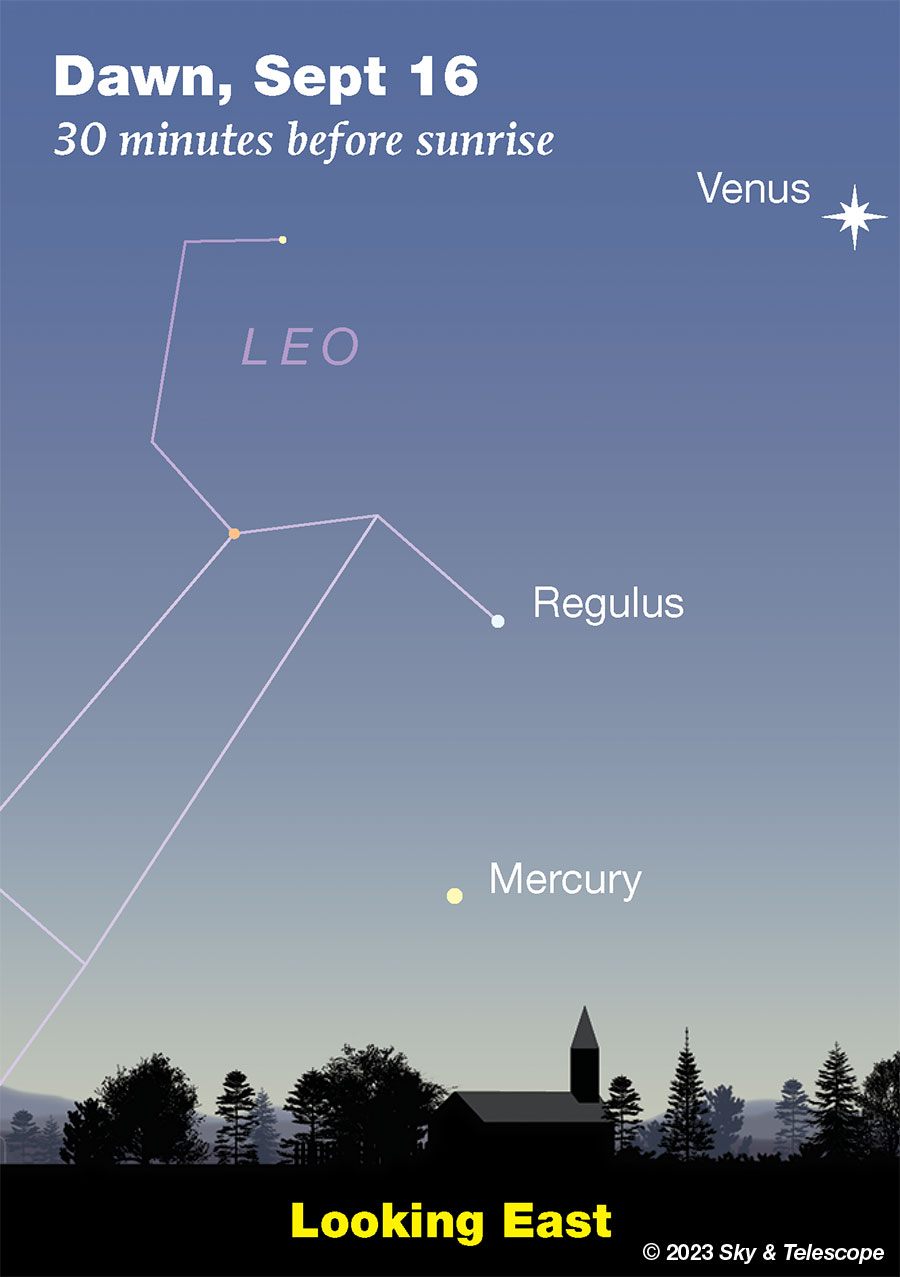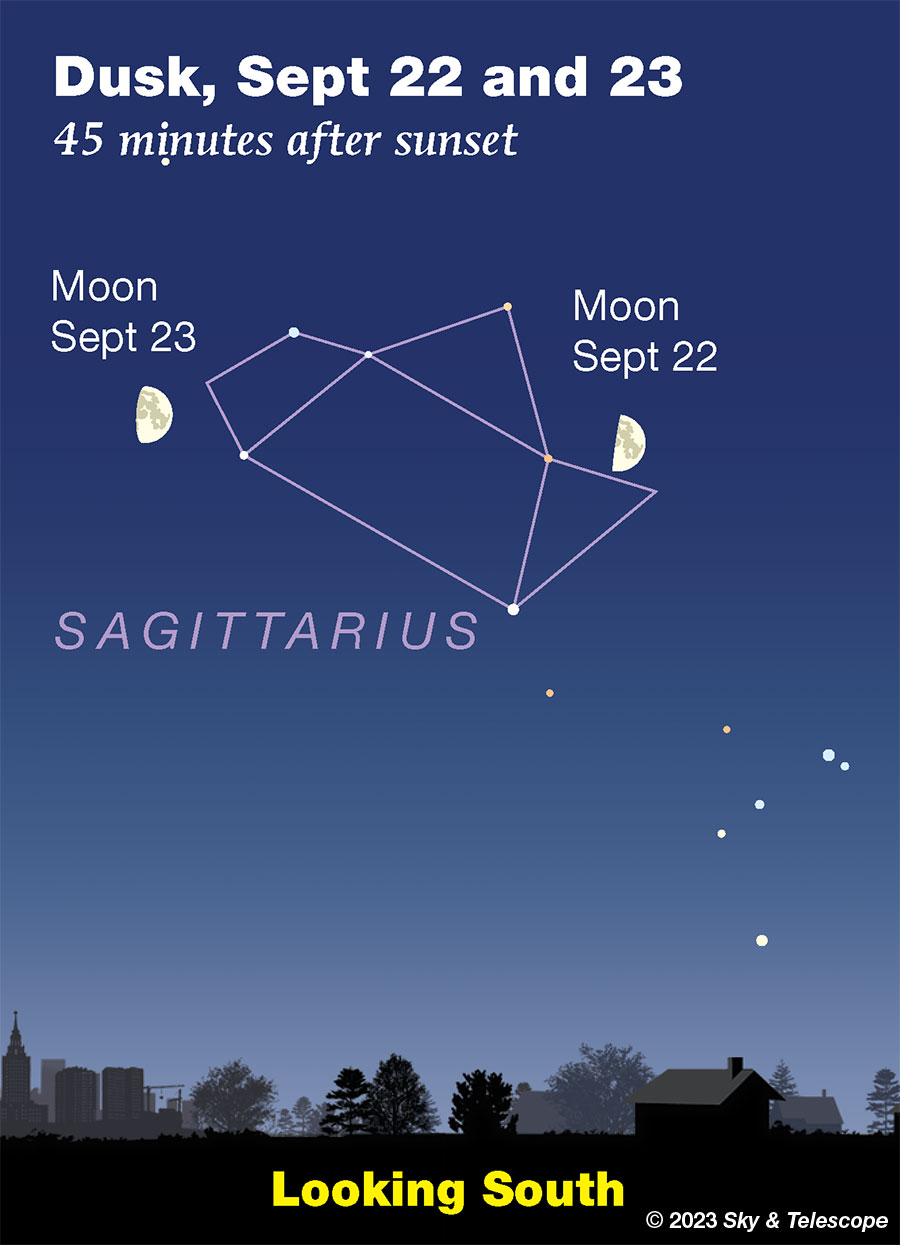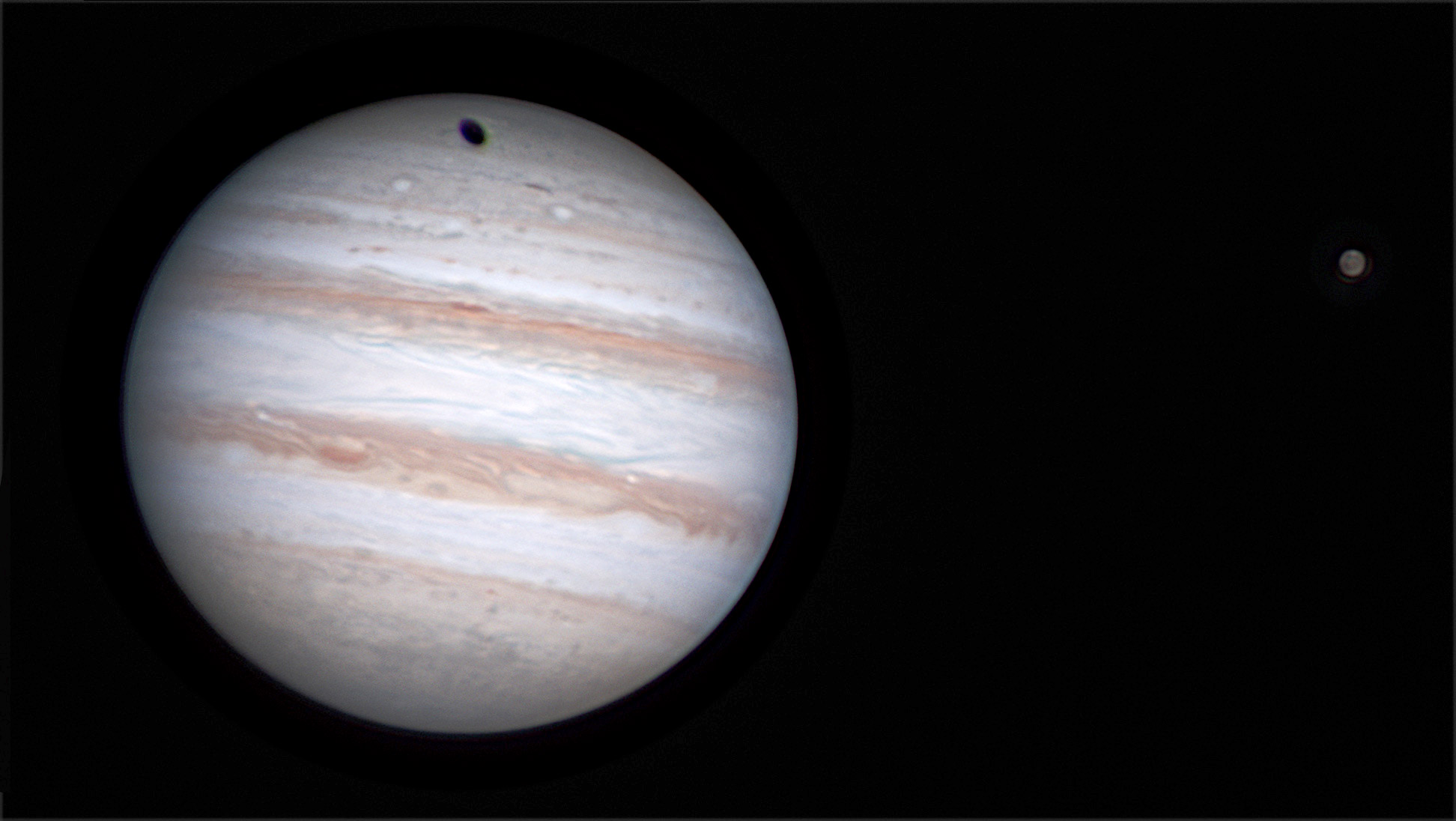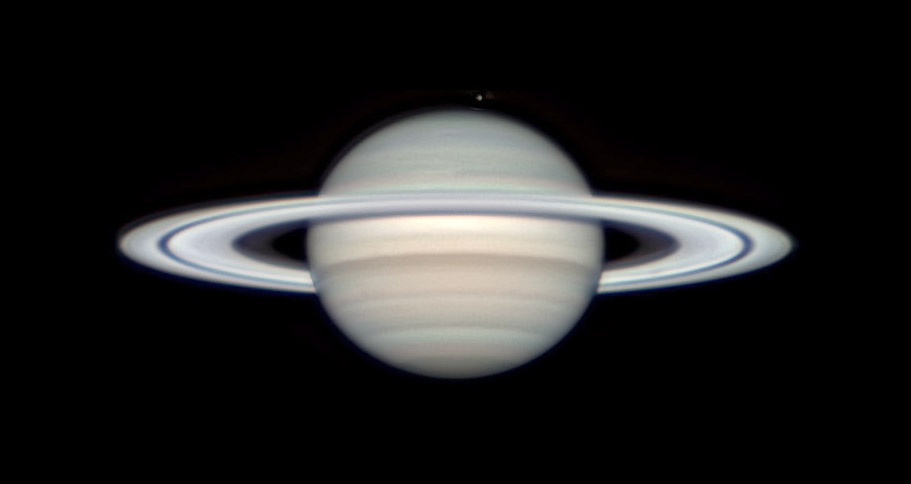Comet Nishimura is at its brightest, but don't expect it to be naked-eye. Comet Nishimura (2023 P1), swinging close by the Sun, has just moved from very low in the east at dawn to very low in the west at dusk. It has brightened on schedule, but due to its low altitude in a twilight sky you'll need at least binoculars, as well as knowledge of exactly what bit of sky to examine for this tiny fuzzball.
Start about 45 minutes after sunset. On Friday evening the 15th the comet will be just a few degrees high a little to the right of due west. Its tail, if you can see any of it, will be pointing up. On the 16th, 17th, and 18th the comet creeps a bit to the left but no higher, and its tail tilts increasingly leftward. Your best chance is probably right around perihelion, September 17th and 18th, when it may be brightest.
After that it sinks lower and out of sight for us in the world's mid-northern latitudes, while fading rapidly. See Bob King's New Comet Nishimura.
FRIDAY, SEPTEMBER 15
■ The 1st-magnitude star very high in the south after dark is Altair. To check that you're looking at the right one, look for its little marker Tarazed, 3rd magnitude, about a finger-width at arm's length to its upper right.
About a fist to Altair's upper left is the little constellation Delphinus, the Dolphin, featured in the September Sky & Telescope, page 45.
Not quite as far straight above Altair is smaller, fainter Sagitta, the Arrow.

SATURDAY, SEPTEMBER 16
■ These closing days of summer always find the Sagittarius Teapot moving westward from south during evening, and tipping increasingly far over to the right as if pouring out summer's end.
SUNDAY, SEPTEMBER 17
■ Look very low in the west-southwest in early twilight for the waxing crescent Moon. Can you see Spica twinkling 3° or 4° lower right of it? Use binoculars.
Then look due west, about 25° to the right of the Moon, for Comet Nishimura at perihelion. Use those binoculars or a wide-field telescope at low power. You have only a narrow time window between when twilight is still too bright and the comet gets too low and sets.
MONDAY, SEPTEMBER 18
■ By about 11 p.m. bright Jupiter is nicely high and shining precisely due east. (The exact time depends on your location.)
Look lower left of Jupiter, by about 1½ fists at arm's length, for the Pleiades.
A similar distance below the Pleiades, Aldebaran is rising.
Nearly three fists left of the Pleiades shines Capella.
TUESDAY, SEPTEMBER 19
■ Algol, in the bottom of Perseus now making its way up the northeastern sky, should be at its minimum brightness, magnitude 3.4 instead of its usual 2.1, for a couple hours centered on 10:01 p.m. EDT. Compare it to Gamma Andromedae (Andromeda's bright foot), mag 2.1, and Delta Persei, mag 3.0 (Delta is currently about the same height as Algol).
WEDNESDAY, SEPTEMBER 20
■ This is the time of year when, by late evening, the dim Little Dipper in the north "dumps water" into the bowl of the Big Dipper way down below. The Big Dipper will dump it back in the evenings of spring.
THURSDAY, SEPTEMBER 21
■ Arcturus shines in the west these evenings as twilight fades out. Capella, equally bright, is barely rising in the north-northeast (depending on your latitude; the farther north you are the higher it will be.) They're both magnitude 0.
Later in the evening, around 9 or 10 p.m., Arcturus and Capella shine at the same height. When will this happen? That depends on both your latitude and longitude.
When it does, turn around and look low in the south-southeast. There will be 1st-magnitude Fomalhaut at about the same height too — exactly so if you're at latitude 43° north (from Boston to Buffalo, Milwaukee, Boise, Eugene). Seen from south of that latitude, Fomalhaut will appear higher than Capella and Arcturus are. Seen from north of there, it will be lower.
FRIDAY, SEPTEMBER 22
■ It's equinox night; fall begins in the Northern Hemisphere tonight at 2:50 a.m. EDT (11:50 p.m. PDT). That's when the Sun crosses the equator heading south for the season. The days are getting shorter.
■ Coincidentally, when summer turns to autumn is about when Deneb takes over from brighter Vega as the zenith star after nightfall (for skywatchers at mid-northern latitudes).
■ First-quarter Moon (exactly so at 3:32 p.m. EDT). After dark it's just over the spout of the Sagittarius Teapot, as shown below (for North American observers).

SATURDAY, SEPTEMBER 23
■ Now the Moon shines by the Teapot's handle.
SUNDAY, SEPTEMBER 24
■ The starry W of Cassiopeia stands high in the northeast after dark. The right-hand side of the W (the brightest side) is tilted up.
Look along the second segment of the W counting down from the top. It's not quite horizontal. Notice the dim naked-eye stars along that segment (not counting its two ends). The brightest of these, on the right, is Eta Cassiopeiae, magnitude 3.4. It's a remarkably Sun-like star just 19 light-years away, and it has an orange-dwarf companion, magnitude 7.3, making it a lovely binary in a telescope (separation 13 arcseconds).
Farther left along the segment is a fainter, wide naked-eye pair if you have a dark sky: Upsilon1 and Upsilon2 Cassiopeiae, 0.3° apart. They're yellow-orange giants unrelated to each other, 200 and 400 light-years distant from us. Upsilon1 is slightly fainter; that's the farther one.
This Week's Planet Roundup
Mercury is very low in the east at dawn, as shown near the top of this page. Starting around September 18th, look for it about 45 minutes before sunrise very far to the lower left of bright Venus. Mercury brightens fast: from magnitude +0.2 that morning to –0.5 on the 23rd. That's a doubling of its light in just five days.
Venus (a brilliant magnitude –4.8, in dim Cancer) is getting ever higher in the east before and during dawn. This week it's at its peak brightness as the "Morning Star." In a telescope it's a thickening crescent.
Venus now rises a good two hours before dawn's first light — a weird UFO of a thing on the horizon far under Castor and Pollux.
Mars is out of sight behind the glare of the Sun and will remain so for the rest of the year.
Jupiter (magnitude –2.7) rises in the east-northeast not long after dark. Watch for it under the brightest stars of Aries. Jupiter dominates the eastern sky by late evening and shines highest in the south during the early-morning hours.

Saturn (magnitude +0.5, in dim Aquarius) is the "star" rather low in the southeast in twilight. It's two weeks past opposition. Saturn shines at a good height for telescopic observing by 9 or 10 p.m., by which time Fomalhaut is twinkling two fists at arm's length below it. Saturn stands highest in the south around 11.

Uranus, magnitude 5.7 in Aries, is nice and high in the early-morning hours, 7° or 8° east of Jupiter.
Neptune, magnitude 7.8 at the Aquarius-Pisces border, is fairly high in the southeast by 10 p.m., 24° east of Saturn. Neptune comes to opposition on September 19th.
All descriptions that relate to your horizon — including the words up, down, right, and left — are written for the world's mid-northern latitudes. Descriptions and graphics that also depend on longitude (mainly Moon positions) are for North America.
Eastern Daylight Time (EDT) is Universal Time minus 4 hours. UT is sometimes called UTC, GMT, or Z time.
Want to become a better astronomer? Learn your way around the constellations. They're the key to locating everything fainter and deeper to hunt with binoculars or a telescope.
This is an outdoor nature hobby. For a more detailed constellation guide covering the whole evening sky, use the big monthly map in the center of each issue of Sky & Telescope, the essential magazine of astronomy.
Once you get a telescope, to put it to good use you'll need a much more detailed, large-scale sky atlas (set of charts). The basic standard is the Pocket Sky Atlas (in either the original or Jumbo Edition), which shows all stars to magnitude 7.6.

Next up is the larger and deeper Sky Atlas 2000.0, plotting stars to magnitude 8.5; nearly three times as many. The next up, once you know your way around, are the even larger Interstellarum atlas (stars to magnitude 9.5) or Uranometria 2000.0 (stars to mag 9.75). And be sure to read How to Use a Star Chart with a Telescope. It applies just as much to charts on your phone or tablet as to charts on paper.
You'll also want a good deep-sky guidebook. A beloved old classic is the three-volume Burnham's Celestial Handbook. An impressive more modern one is the big Night Sky Observer's Guide set (2+ volumes) by Kepple and Sanner.
Do computerized telescopes replace charts? Not for beginners I don't think, especially not on mounts and tripods that are less than top-quality mechanically. Unless, that is, you prefer spending your time getting finicky technology to work rather than getting to know the sky. And as Terence Dickinson and Alan Dyer say in their Backyard Astronomer's Guide, "A full appreciation of the universe cannot come without developing the skills to find things in the sky and understanding how the sky works. This knowledge comes only by spending time under the stars with star maps in hand."
But finding faint objects the old-fashioned way with charts isn't simple either. Learn the tricks at How to Use a Star Chart with a Telescope.
![]() Audio sky tour. Out under the evening sky with your
Audio sky tour. Out under the evening sky with your
earbuds in place, listen to Kelly Beatty's monthly
podcast tour of the naked-eye heavens above. It's free.
"The dangers of not thinking clearly are much greater now than ever before. It's not that there's something new in our way of thinking, it's that credulous and confused thinking can be much more lethal in ways it was never before."
— Carl Sagan, 1996
"Facts are stubborn things."
— John Adams, 1770
 3
3









Comments
Blaine Dickey
September 15, 2023 at 10:32 am
The comet C/2023 P1 (Nishimura) was easily visible to me in the morning sky earlier in the month but was no where to be seen last evening in the western sky through binoculars, a 80mm scope, images I took etc. Did anyone else see it?
You must be logged in to post a comment.
Zubenelgenubi 61
September 16, 2023 at 5:21 pm
It is only a couple of degrees up in bright twilight, about 45 minutes after sunset. Sort of like Mercury at a bad apparition but dimmed even more because it is a diffuse object and not a point source. Best bet is to use GoTo if you have it or just scan with binoculars if you are lucky enough to have a very clear sky. Or just focus carefully and image in the right direction- carefully adjust the settings and it might just come out, but barely. The comet must be quite bright, probably 2nd or 3rd mag, to be seen at all under these circumstances, but rendered all but visible due to the bright twilight. One image shown on Spaceweather actually shows the tail, very dimly.
You must be logged in to post a comment.
Rod
September 16, 2023 at 9:00 am
Wonderful time last night looking at Saturn. I showed my grandson Saturn using the 10-inch telescope with 14-mm eyepiece (about 85-86x). Very nice, bright views (probably needed a planetary filter). Titan, Rhea, and Dione moons visible, rings and stars around Saturn in Aquarius. Temps 13C with clear skies, lovely time. The little guy thought he may see craters on Saturn. Recently we looked at the Moon in early morning and he could see many craters along the terminator line, so perhaps at Saturn too 🙂 A very enjoyable way to spend some time near 2100 EDT last night.
You must be logged in to post a comment.
You must be logged in to post a comment.